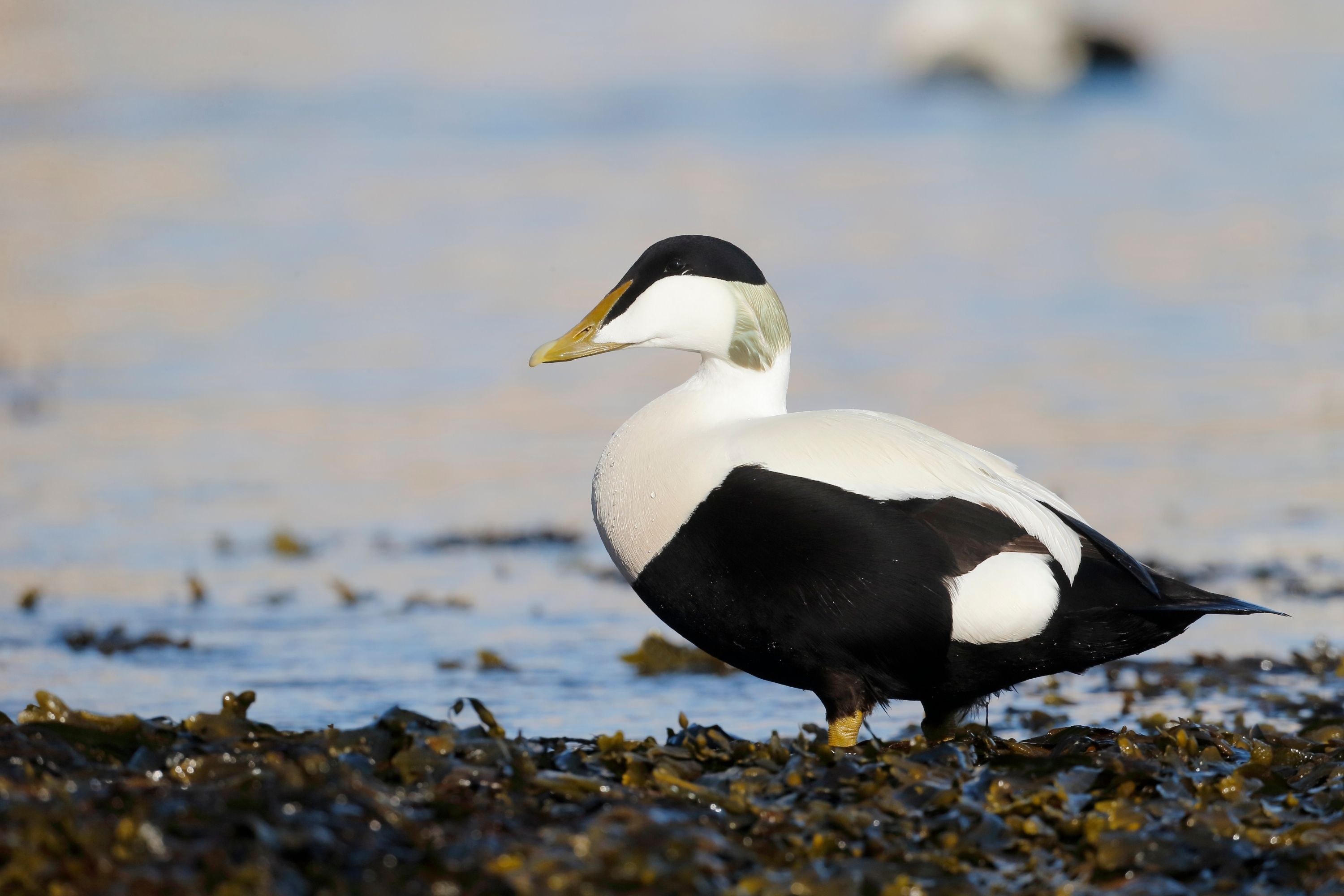Common eider
(Somateria mollissima)

Description
The common eider (Somateria mollissima), also called St. Cuthbert's duck or Cuddy's duck, is a large (50–71 cm or 20–28 in in body length) sea-duck that is distributed over the northern coasts of Europe, North America and eastern Siberia. It breeds in Arctic and some northern temperate regions, but winters somewhat farther south in temperate zones, when it can form large flocks on coastal waters. It can fly at speeds up to 113 km/h (70 mph). The eider's nest is built close to the sea and is lined with eiderdown, plucked from the female's breast. This soft and warm lining has long been harvested for filling pillows and quilts, but in more recent years has been largely replaced by down from domestic farm-geese and synthetic alternatives. Although eiderdown pillows or quilts are now a rarity, eiderdown harvesting continues and is sustainable, as it can be done after the ducklings leave the nest with no harm to the birds. The common eider is both the largest of the four eider species and the largest duck found in Europe, and is exceeded in North America only by smatterings of the Muscovy duck, which only reaches North America in a wild state in southernmost Texas (and arguably south Florida where feral but non-native populations reside). It measures 50 to 71 cm (19+1⁄2 to 28 in) in length, weighs 0.81 to 3.04 kg (1 lb 12+1⁄2 oz to 6 lb 11 oz) and spans 80–110 cm (31–43 in) across the wings. The average weight of 22 males in the North Atlantic was 2.21 kg (4 lb 14 oz) while 32 females weighed an average of 1.92 kg (4 lb 3+1⁄2 oz). It is characterized by its bulky shape and large, wedge-shaped bill. The male is unmistakable, with its black and white plumage and green nape. The female is a brown bird, but can still be readily distinguished from all ducks, except other eider species, on the basis of size and head shape. The drake's display call is a strange almost human-like "ah-ooo," while the hen utters hoarse quacks. The species is often readily approachable. Drakes of the European, eastern North American and Asia/western North American races can be distinguished by minor differences in plumage and bill colour. Some authorities place the subspecies v-nigra as a separate species. This species dives for crustaceans and molluscs, with mussels being a favoured food.
Taxonomic tree:







